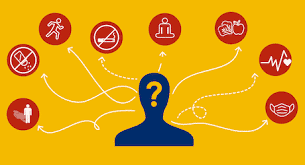Developing an effective inbound marketing strategy can be a difficult task for businesses with a small marketing department. You’re aware that you should be producing valuable content and optimizing for search. However, you and your team are always pressed for time. Despite your efforts, your blog content lacks focus on goals. Your social media accounts are deserted, and your website has fallen off search engine result pages.
Don’t be discouraged if any of this sounds familiar. This post will discuss what constitutes an effective inbound marketing strategy and how to develop one that will keep your marketing team focused on the company’s objectives. Also, we’ll be looking at some effective inbound marketing examples. include 1. SEO, 2. Webinar…
What is Inbound Marketing?
Inbound marketing is an effective business strategy that attracts customers by creating valuable content and experiences that are tailored to their specific needs. While outbound marketing bombards your audience with content they don’t always want, inbound marketing establishes connections and solves problems they already have.
Outbound marketing, on the other hand, refers to the marketing strategy behind traditional paid media, such as television commercials, billboards, and those insane Vitamin Water posters that make your morning commute worthwhile. The direct advertisement of a product or service is shared by all of these ad types.
Read Also: Inbound Marketing vs Outbound: How to Scale any Business Combining both Strategies
Inbound Marketing Methodology
The inbound methodology is an effective strategy for growing your business by cultivating meaningful, long-term relationships with consumers, prospects, and customers. It is about valuing and empowering these individuals to achieve their objectives at any stage of their journey with you.
Why is this so? Because if your customers succeed, you will succeed as well.
The inbound methodology can be used in three different ways:
- Attract: attracting the right people by providing valuable content and engaging in conversations that establish you as a trusted advisor with whom they want to work.
- Engage: Engage them by presenting insights and solutions that address their pain points and goals, increasing their likelihood of purchasing from you.
- Delight: providing assistance and support to enable your customers to be successful with their purchase.
When customers achieve success and share it with others, it attracts new prospects to your organization, resulting in a self-sustaining loop.
Let’s take a look at some more inbound marketing strategies.
Strategies for Inbound Marketing
These strategies will assist you in effectively marketing to your target audience through inbound channels. There are specific strategies for each inbound method of attracting, engaging, and delighting consumers listed below to keep your flywheel spinning and help your business grow.
#1. Attraction Techniques
Content creation and development are essential components of inbound marketing strategies that attract your target audience and buyer personas.
Begin by creating and publishing valuable content, such as blog articles, content offers, and social media, to reach your target audience. Guides on how to use your products, information about how your solution can solve their problems, customer testimonials, and details about promotions or discounts are all examples.
Optimize all of this content using an SEO plan to attract your audience members on a deeper level through inbound marketing. An SEO plan would necessitate the targeting of specific keywords and phrases connected to your products or services, the problems you answer for clients, and the ways you assist target audience members.
This will help your material and information to appear naturally on search engine results pages (SERPs) for individuals looking for it. It is also known as your target audience or the proper customers for your business.
#2. Engagement Strategy
When employing inbound techniques to engage your audience, make sure you communicate and interact with prospects and customers in a way that encourages them to create long-term relationships with you. When employing these engagement tactics, including information regarding the value your company will bring them.
How you handle and manage inbound sales calls is one example of a specific engagement marketing strategy. Pay attention to how customer service employees handle calls from potential customers and customers who are interested. Also, make sure you’re always offering solutions rather than products. This ensures that all transactions result in mutually advantageous agreements for both clients and your company. So, in other words, you deliver value to your right-fit clients.
#3. Strategies for Delight
Delightful inbound techniques keep consumers happy, satisfied, and supported even after they’ve made a purchase. These techniques entail your team members serving as consultants and experts to clients at all times.
Incorporating clever, well-timed chatbots and surveys to assist, support, and solicit feedback from clients is an excellent approach to please them. Bots and surveys should be delivered at specific stages in the customer’s journey. This is to ensure they make sense and are valuable.
When it comes to satisfying customers, another crucial inbound marketing strategy is social media listening. Followers of your social media pages may use one of your profiles to express feedback, ask questions, or share their experience with your products or services. Respond to these encounters with information that assists, supports, and encourages followers. This demonstrates that you are listening to and caring about them.
Finally, an inbound strategy centered on delighting customers assists and supports customers in every situation. This is regardless of whether or not your organization benefits from it. Remember that a happy customer becomes a brand champion and booster, so manage all encounters, large and little, with care.
Read Also: Content Marketing Strategy: Complete Guide (+ Examples)
Inbound Marketing Examples
Inbound marketing is a broad word that incorporates a variety of distinct strategies.
After all, there are other ways to get a potential buyer to visit your website.
Let us discuss these inbound marketing examples.
#1. A blog.
According to HubSpot, the SaaS startup that popularized the term “inbound marketing” in 2006, marketers who prioritize blogging are 13 times more likely to get a positive ROI.
Also, consistency pays off. Businesses who publish blog content at least 16 times per month earn 3.5x more website traffic and 4.5x more leads than organizations that only update their blogs a few times per month.
A blog is an excellent approach to providing long-form content that answers your prospects’ pressing issues (e.g., How should I set up my Google Ads account?).
The more instructive your blog is, and the more frequently you update it with new information, the more likely you are to become the trusted brand that prospects remember as they progress down the marketing funnel.
#2. An Infographic
People don’t always have the time (or interest) to sit down and read 2,000 words about long-tail keywords, for example. Sometimes your prospect merely wants a fast snippet of valuable data, ideally provided in an appealing way.
Furthermore, if the information you’re releasing is particularly valuable—say, benchmark statistics for mobile ads across 18 industries—there’s a strong possibility it’ll generate a lot of buzz on the internet.
#3. A Whitepaper
Your audience determines the definition and purpose of a whitepaper as an inbound marketing strategy. The industry you work in and the goals you set for yourself will undoubtedly have an impact on the end output.
For our purposes, a whitepaper is an in-depth, well-researched piece of educational content with a little more formal tone than your typical blog post.
A whitepaper is your term paper, whereas a blog post is your weekly homework project. As a general rule, anticipate that prospects who download your whitepaper are looking for greater rigor, depth, creativity, and value.
It should also look decent. Half of the battle is in the presentation. As a result, when readers have downloaded your content, you can use email marketing to get them closer to conversion.
#4. An Ebook
I’m not going to lie—the advantages of an ebook are very comparable to those of a whitepaper. It’s another chance to establish yourself as an authoritative source of actionable, intelligent knowledge. Typically, it is provided for free in exchange for contact information.
If you decide to add ebooks into your inbound marketing approach, which I highly encourage, don’t underestimate the task. Keep in mind that you’re writing a book.
#5. A Case study (customer spotlight)
Assume you’re a business owner looking for social media management software like the one I mentioned earlier. You come across a case study while perusing the blog of one of the organizations you’re considering. It describes the experience of a corporation that purchased the program a year ago and has had great results ever since.
For the featured customer, this software has made a significant difference.
You naturally think to yourself, “Well, that means it can work for me, right?” ”
That is the strength of a case study. It shows potential customers that your product or service has worked well for people just like them.
#6. A Webinar
It is not always simple to infuse personality into your written content.
True, the blog post’s informality allows you to crack jokes. Nevertheless, in the highly polished world of whitepapers and ebooks, you may find yourself wishing you could add something a bit more… human.
This is where the webinar comes into play.
A webinar is an internet seminar that delivers lecture-style content to a limited web audience. With this structure, a member (or a few people) of your content team can give the vital information we’ve been discussing in a highly engaging and personalized manner.
The presence of a genuine, sentient person—even if it is only his or her voice—creates the impression that your brand is having a direct dialogue with your prospects. Whereas your prospects can easily dismiss the creative individuals who generate your blog pieces, whitepapers, and ebooks, this is not the case with a webinar.
#7. A Podcast
Make as many jokes as you want about conceited millennials. Podcasting is trendy these days. The podcast format, like the webinar format, allows you to give your business some personality. As a result, when your prospects make their final judgments, they will recall you as a helpful and relatable resource.
Podcasting does not have to be time-consuming. You’re in business if you have a laptop, a few microphones, and at least one employee who doesn’t sound like Steve Buscemi.
#8. Video series
I’ll skip the video marketing numbers you’ve been hearing all year and just say this:
The popularity of video content is enormous. It is expanding, entertaining, and, most importantly, effective. When people are going through Facebook and Instagram, this is what they want to see.
While it is beneficial to make your textual material long-form, video works best when it is bite-sized. There are exceptions to every rule, but in general, social media users are uninterested in videos that last more than a minute or two.
Furthermore, video provides an excellent opportunity to repurpose content in a more consumable format. A prospect may not have had time to attend your webinar, but he can definitely spend two minutes skimming through LinkedIn to get the basics.
#9. Search engine optimization (SEO)
What better way to end this post than with the inbound marketing example that makes the preceding eight examples of inbound marketing even more effective?
SEO is an umbrella phrase that refers to a set of strategies that you may (and should) use to increase the visibility of your content on search engine results pages.
It makes no difference how slick your ebook looks or how clear your podcast sounds if your prospects can’t find you in organic search results. That implies placing your material on page one, preferably in the middle or at the top.
Otherwise, you’re not attracting visitors to your website.
How can a business track the success of its Inbound Marketing efforts?
Tracking the success of Inbound Marketing efforts can be done by using tools such as Google Analytics, social media analytics, and landing page analytics. These tools can provide insights into website traffic, lead generation, and conversions, allowing businesses to make data-driven decisions to optimize their Inbound Marketing strategies.
What are the latest trends and innovations in Inbound Marketing?
The latest trends and innovations in Inbound Marketing include the use of artificial intelligence and machine learning, personalization, and the integration of Inbound Marketing with sales and customer service processes.
How can Inbound Marketing be used to target specific customer segments?
Inbound Marketing can be used to target specific customer segments by creating buyer personas, understanding the customer journey, and creating relevant, targeted content that speaks directly to the needs and interests of those customer segments.
What are the common challenges faced in Inbound Marketing and how can they be overcome?
Some common challenges faced in Inbound Marketing include generating sufficient website traffic, creating and distributing high-quality content, and measuring the ROI of Inbound Marketing efforts. These challenges can be overcome by using a data-driven approach, conducting market research, and regularly evaluating and adjusting Inbound Marketing strategies.
What are the best practices for Inbound Marketing?
The best practices for Inbound Marketing include creating a content strategy, using a variety of content formats, optimizing content for search engines, leveraging social media, and consistently measuring and adjusting strategies based on data and insights.
What are the benefits of using Inbound Marketing for B2B businesses?
Inbound Marketing can benefit B2B businesses by attracting high-quality leads, building relationships with customers, establishing thought leadership, and demonstrating the business’s expertise and understanding of its customers’ needs and challenges.
Conclusion
The traditional means of advertising is fast going out of style and if you must remain relevant, yo must tailor down your audience exact needs and design strategies that will keep them glue to you using the inbound marketing technique.
Inbound Marketing FAQs
IS social media inbound marketing?
In the inbound marketing methodology, social media is part of the initial stage where you’re attracting people to your website. Along with SEO and your blog, social media is an important means of attracting new visitors and hopefully converting these into leads
How do you do inbound marketing?
How to create an inbound marketing strategy
- Building buyer personas. …
- Set your inbound marketing strategy objectives. …
- Outline your customers’ marketing triggers. …
- Create a list of keywords. …
- Align content to the buyer’s journey. …
- Create a lead nurturing process. …
- Conversion-focused blogging.
What is outbound and inbound marketing?
Outbound marketing refers to any kind of marketing where a company initiates the conversation and sends its message out to an audience. … In addition, paid search advertising is considered inbound marketing because your ads only appear when people are searching for products or services that you offer.
What is an ABM campaign?
Account-based marketing (ABM) is a business marketing strategy that concentrates resources on a set of target accounts within a market. It uses personalized campaigns designed to engage each account, basing the marketing message on the specific attributes and needs of the account






